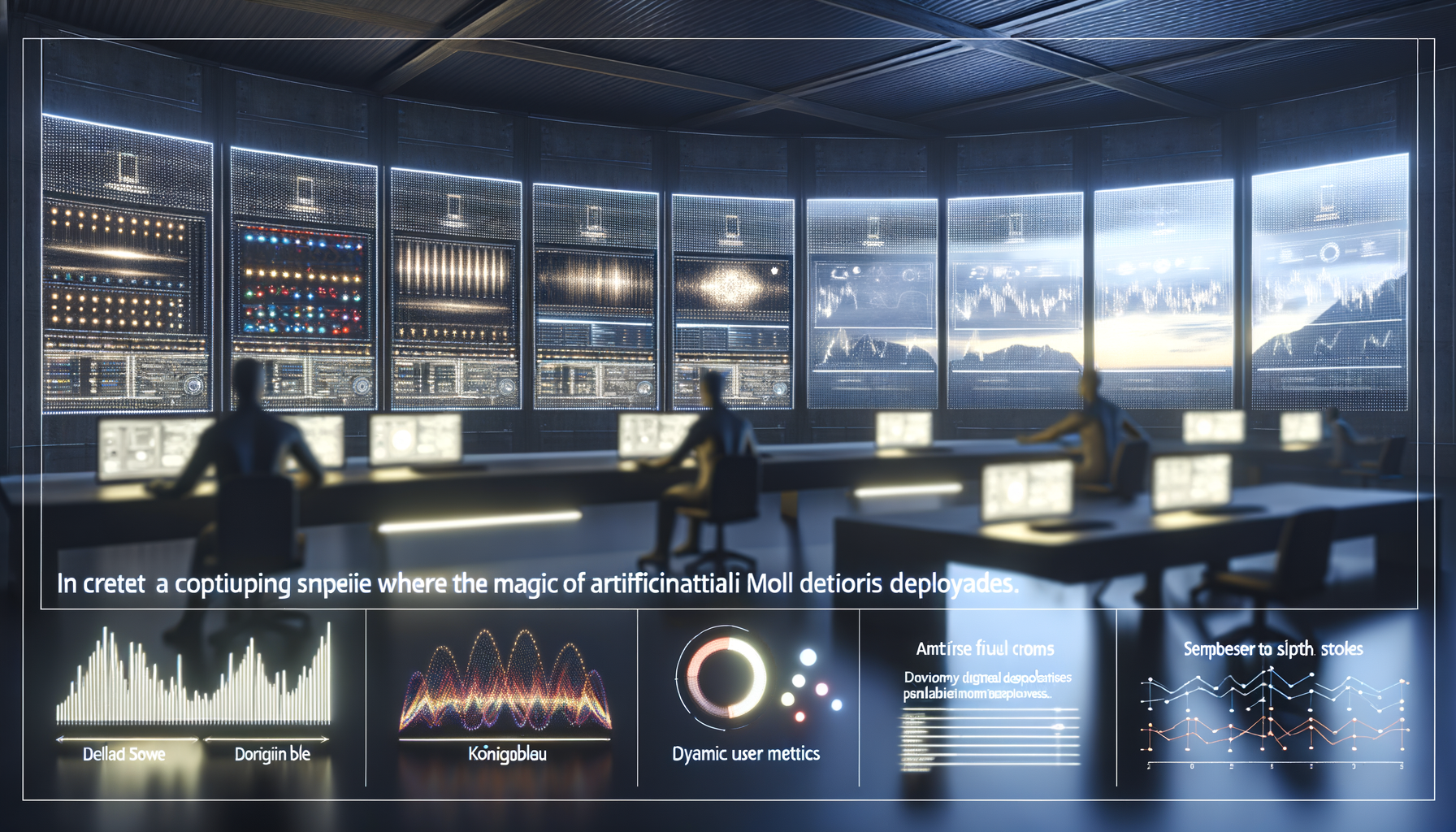You’re comparing endless AI benchmarks… but what if your “best” model choice is sabotaging your rollout? Here’s what the insiders already know—and what you’re missing.
Benchmark Dominance: No Longer the Trump Card in the AI Arena
Another day, another leaderboard shuffled. Not long ago, every AI release was a mad dash up the benchmark ladder—a sprint for a few points over the last contender. But here’s a secret: as we stride into 2025, the difference between “top model” and “second place” often matters far less in practice than you are conditioned to believe. The era of benchmark-based decision making is quietly sliding into obsolescence, with real-world usability becoming the new kingmaker for enterprise AI choices.
AI Benchmarking: From Scientific Gold Standard to Practical Glass Ceiling
Benchmarks aren’t worthless: they offer a shared language for measuring raw capability. Yet the rapid maturation of foundation models has led to the ‘benchmark paradox’—when multiple contenders are consistently neck-and-neck on abstract datasets, those scores stop differentiating actual outcomes. Each new frontier test gets crowded with quick followers. The inevitable result: even significant model advances are diluted by a sea of claims that are hard to verify in messy, real-life applications.
If your model selection process stops at leaderboard glory, you’re building on a foundation with hidden cracks.
Three Reasons Why Real-World Usability is Taking Over
- The Integration Abyss: Even state-of-the-art models lose their sheen when documentation is cryptic, open APIs are inconsistent, or edge case troubleshooting is a labyrinth. The true “model winner” makes embedding and scaling it a straightforward journey, not a death march.
- The Total Cost Reckoning: With similar performance, costs become defining. It’s not just inference pricing—data transfer, ongoing maintenance, and licensing headaches routinely crush budgets unless proactively compared.
- The Ecosystem Gravity Well: Platforms and developer communities accelerate learning, adoption, and troubleshooting. A model alone can’t solve for support, observability, and pre-built integrations—the smart money flows where these are vibrant.
What Does “Usability” Really Mean for AI in 2025?
The definition of usability has expanded. Today’s enterprise deployments demand:
- Seamless integration—SDKs and APIs that fit every popular stack without fragile workarounds.
- Transparent cost structure—Clear, predictable pricing at scale, as well as granular resource management features.
- Time-to-value—Low friction from POC to production, with streamlined onboarding and minimal operational pitfalls.
- Robust ecosystem—A marketplace of extensions, proven templates, and an active developer forum ready to solve edge-case headaches quickly.
- Trust and Reliability—Long-term product support, auditability, compliance certifications, and an enterprise-grade SLA.
The New Enterprise Stack: Build or Buy Based on the Right Metrics
Here’s where so many AI leaders are reorienting:
- From: “Top of leaderboard = the answer”
- To: “What’s my TCO and integration roadmap for the next six months if I choose this?”
Ask yourself:
- Will this model’s quirks derail my deployment speed?
- Does it natively support updates or hot-fixes for our regulatory environment?
- Will my team spend months debugging edge cases because community support is thin?
- Has anyone at my scale successfully launched and maintained it?
Ultimately, models that offer the fastest, most reliable path from evaluation to value creation—not paper advantages—are dominating in actual enterprise adoption stats. Quietly, teams are choosing the AI that just works, even if it’s not the “superstar” on paper.
What Practical Usability Looks Like: Field Test Scenarios
Integration, Not Just Implementation
Modern enterprises rarely run their AI models in isolation. It’s about weaving models into customer support flows, existing analytics platforms, automation pipelines, and legacy ERP systems. Here, models with robust SDKs across multiple languages, unequivocal documentation, and supported deployment artifacts shorten delivery from months to weeks.
Predictable Cost, Not Surprise Burn Rates
Model A and Model B can both achieve 94% macro-F1 on a leaderboard—but if Model A’s pricing structure punishes dynamic scaling, while Model B monetizes inferences sensibly, the latter quietly captures the market. It’s not raw accuracy, it’s ongoing budget sanity and the ability to forecast spend with confidence.
Ecosystem Support: The Productivity Multiplier
An active, resource-rich ecosystem isn’t a nice-to-have. From plug-and-play connectors to workflow templates, and third-party monitoring dashboards, the “village” around each model tangibly accelerates delivery and slashes risk. Time-starved teams lean heavily on these assets, and the absence of them can doom even the most technically superior foundation model.
Super-Contracts, Compliance, and the Invisible Costs
Increasingly, compliance and contract terms become the silent killer features. Ask yourself: which vendor will indemnify your deployment? Which will co-sign on compliance certifications? Which one guarantees backward compatibility for your tooling if specs move fast? These are non-negotiables for regulated industries and missed by strict benchmark-watching.
Why Raw Scores Will Keep Fading
- Model homogeneity: Many open and closed-source models now deliver indistinguishable results on standard benchmarks—further fueled by open weights and increasingly similar pretraining data.
- Specialization is rising: Real deployments solve for niche, often proprietary problems—where public benchmarks are poor proxies for success.
- Fast iteration cycles: The window during which a “best model” retains its status has shrunk from a year to months or even weeks. Long rollout times see theoretical advantage slip away before launch.
Case Example: The Enterprise LLM Rollout
Take two teams starting from the latest open weights. Team A builds on Model X, citing a small benchmark edge. Team B selects Model Y, slightly behind on paper but with rich managed hosting tools and ready-made integrations. Six months in, Team B has three production pipelines running and robust audit trails installed, while Team A is stuck upskilling, patching compatibility breaks, and chasing undocumented edge cases.
Lesson: Competitive edge is now in time-to-production and cost-of-ownership management, not in a one-point win on a public dataset.
Strategic Recommendations: Choosing Your AI Models for 2025
- Map Your Exact Integration Landscape: Identify every external system, language, and compliance requirement before you review another leaderboard.
- Budget for Ecosystem and Support—Not Just Model Inference: Line items should cover community, partnership, and long-term upgrade path costs.
- Pilot Based on Operations, Not Just Metrics: Run real-world POCs measuring onboarding, config, scale-out, and monitoring ease—not just accuracy replication.
- Solicit References from Enterprises at Your Scale: The playground is full of successful demos; you want success stories at your deployment size and risk tolerance.
Conclusion: What Gets Measured Gets Managed—Change What You Measure
The AI model landscape hasn’t so much leveled as outgrown its original rules of engagement. As raw performance gaps shrink, value now emerges from usability, cost, and the invisible mesh of support and ecosystem. Organizations that still treat benchmark supremacy as a shortcut are setting themselves up for unwieldy, missed-opportunity deployments. The savvy are already optimizing for what matters beyond the numbers, and that’s where the new advantage is being quietly secured.
The real winner in the AI race is the model that shortens your path to impactful, sustainable results—not just the one with the top-of-page score.





